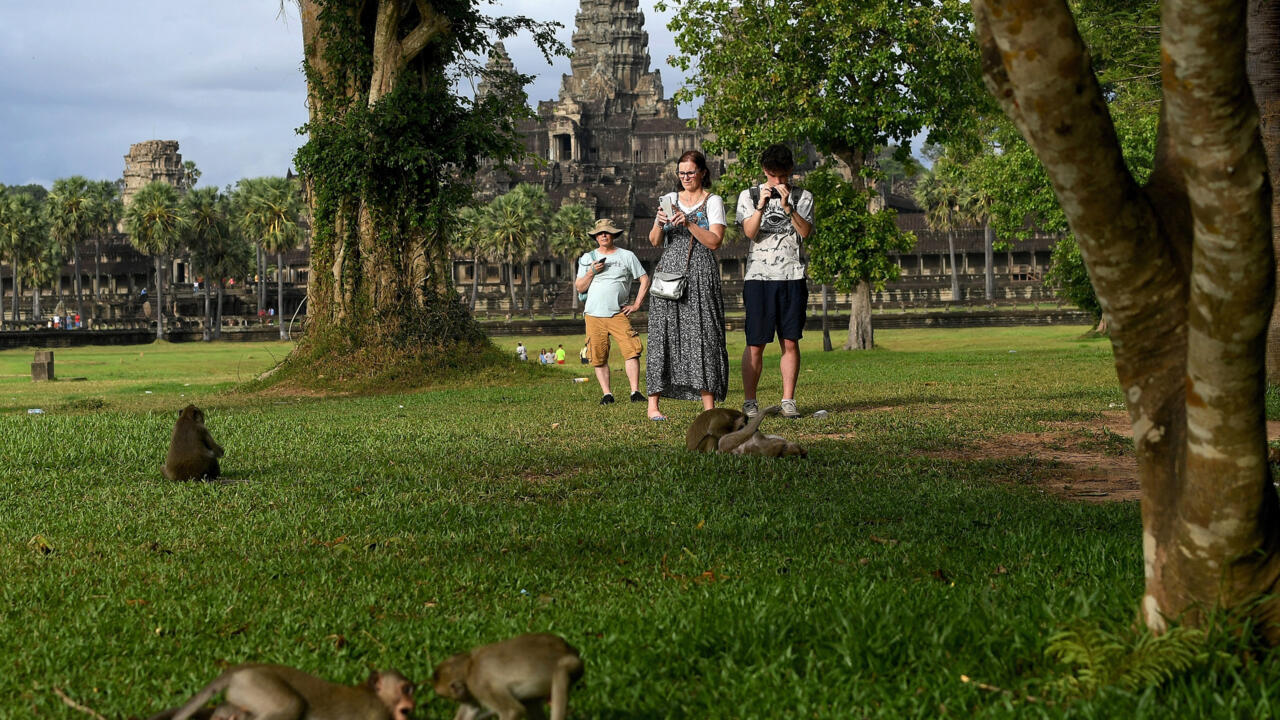Wild monkeys egged on by YouTubers have been rampaging at Cambodia’s famed Angkor Wat complex, attacking tourists, wrecking temple stonework and damaging information boards, officials said Wednesday.
The agency that runs the UNESCO-listed site warned visitors to steer clear of the growing gangs of “aggressive” macaques that live around the sprawling complex of ruins and have been biting tourists.
The macaques are native to the lush forests that surround Angkor Wat, but Apsara National Authority said human interaction – particularly by people filming content to post online – had changed their behaviour.
A small number of YouTubers regularly fed monkeys to create videos and this has “changed the monkeys’ natural behaviour from being wild animals to domestic ones that are aggressive, steal foods, and cause injuries among people”, it said in a statement.
Some have reportedly even filmed themselves abusing macaques.
Long Kosal, a spokesman for the Apsara National Authority, told AFP that as well as the danger posed to tourists, the agency was increasingly worried about the monkeys damaging the centuries-old stonework.
“On top of biting visitors, they have been climbing up and pushing stones down, damaging temples,” he said, adding that the macaques had also damaged information boards.
The agency has urged tourists to leave the monkeys alone while visiting the ruins, and said it is looking for “an appropriate solution” to the problem.
Angkor Wat, built from the 9th to the 15th centuries, was the capital of the Khmer Empire and is Cambodia’s top tourist attraction, bringing in valuable revenue to a poor country.
More than a million foreign tourists visited the park last year.
Since it became a world heritage site in 1992, Angkor Wat and the surrounding jungle have benefited from increased legal and physical protections.
There are hopes that wildlife sightings will also spark interest in local and foreign tourists and boost conservation education efforts.
Last year, the agricultural ministry announced a plan to conduct a census of monkeys in public areas and to identify and relocate those posing a danger to humans.
On the one hand I want them to name and shame. On the other I don’t want these assholes getting more traffic.
Edit: there’s a ton more info in this AP article: https://apnews.com/article/cambodia-monkey-abuse-youtube-angkor-38233596360b5d51b47d17abfb6820f2
So they have the same effect on other primates than humans?




